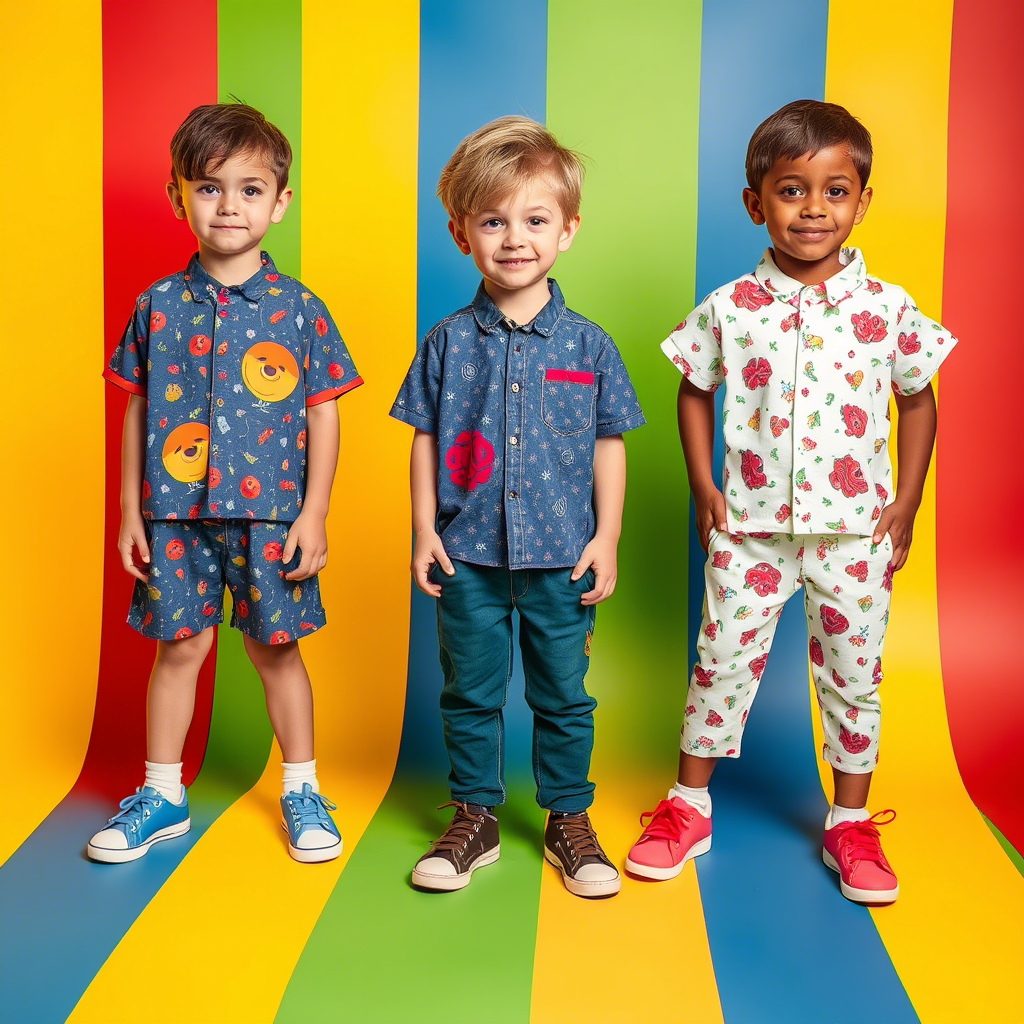Custom Clothing Manufacturers for Kids Apparel Brands
2025/05/16

Designing Kids’ Clothing: Trends, Tips, and Best Practices
The kids’ clothing industry is a vibrant and ever-evolving market, driven by the demand for stylish, comfortable, and safe apparel. As a parent or a manufacturer, understanding the key elements that make kids’ clothing appealing and functional is crucial. This article explores the latest trends, design considerations, and best practices in creating kids’ clothing that delights both children and parents.
Understanding Kids’ Clothing Trends
The kids’ clothing market is influenced by various factors, including fashion trends, cultural preferences, and the growing awareness of sustainability. Currently, there is a noticeable shift towards clothing that is not only stylish but also environmentally friendly and durable.
- Sustainable Materials: The use of eco-friendly materials is on the rise. Parents are increasingly preferring clothing made from organic cotton, recycled polyester, and other sustainable fabrics.
- Comfort and Practicality: Kids’ clothing needs to be comfortable and practical. Designers are focusing on creating garments that allow for ease of movement and are suitable for daily activities.
- Personalization: With the rise of customization, kids’ clothing is becoming more personalized. Brands are offering options for parents to customize clothing with their child’s name, favorite colors, or characters.

Incorporating cute cartoon characters into designs is a popular trend, as seen in various kids’ hoodies and t-shirts. This approach not only makes the clothing appealing to children but also allows parents to express their child’s personality through their clothing choices. For more inspiration on kids’ clothing designs, you can visit Lezon Kids’ products page.
Design Considerations for Kids’ Clothing
Designing kids’ clothing involves more than just creating cute or fashionable garments. It requires a deep understanding of the needs of both children and their parents.
- Safety First: Ensuring the clothing is safe for children is paramount. This includes using non-toxic dyes, avoiding small parts that can be a choking hazard, and ensuring that the fabric is breathable and hypoallergenic.
- Durability: Kids can be rough on their clothing, so durability is key. Manufacturers are focusing on creating garments that can withstand repeated washing and wear without losing their shape or color.
- Ease of Care: Parents appreciate clothing that is easy to care for. Designs that are simple to wash and dry are highly valued.

The use of vibrant colors and playful patterns is a hallmark of kids’ clothing. These elements not only make the clothing visually appealing but also contribute to the child’s sense of fun and creativity. For a wide range of kids’ clothing options, including vibrant and playful designs, check out Lezon Kids’ children’s clothing section.
Best Practices for Kids’ Clothing Manufacturers
To succeed in the competitive kids’ clothing market, manufacturers must adhere to best practices that ensure quality, safety, and customer satisfaction.
- Quality Control: Implementing rigorous quality control measures is essential. This includes checking for defects, ensuring compliance with safety standards, and testing the durability of the garments.
- Sustainable Practices: Adopting sustainable practices not only appeals to environmentally conscious consumers but also contributes to a more ethical manufacturing process.
- Customer Feedback: Listening to customer feedback is crucial for understanding market needs and preferences. It helps in making informed decisions about product development and design.
Marketing Strategies for Kids’ Clothing
Effective marketing is key to the success of any kids’ clothing brand. Understanding the target audience and using the right marketing channels can significantly impact sales and brand recognition.
- Social Media: Social media platforms are powerful tools for reaching parents and showcasing kids’ clothing. Brands can share high-quality images, customer testimonials, and behind-the-scenes content to engage their audience.
- Influencer Partnerships: Partnering with influencers who have a following among parents can be an effective way to promote kids’ clothing. Influencers can showcase the clothing in real-life scenarios, providing authenticity and credibility.
- Online Presence: Having a strong online presence is crucial. This includes having an easy-to-navigate website and being active on relevant online marketplaces.

The incorporation of fun illustrations and bold typography in kids’ apparel is a great way to make the clothing stand out. These design elements can add a playful touch, making the clothing more appealing to both kids and parents.
Conclusion
The kids’ clothing industry is a dynamic and competitive market that requires a deep understanding of current trends, design considerations, and best practices. By focusing on sustainability, comfort, and personalization, manufacturers can create clothing that delights both children and parents. Implementing effective marketing strategies and maintaining a strong online presence are also crucial for success. As the industry continues to evolve, staying informed and adaptable will be key to thriving in this vibrant market.